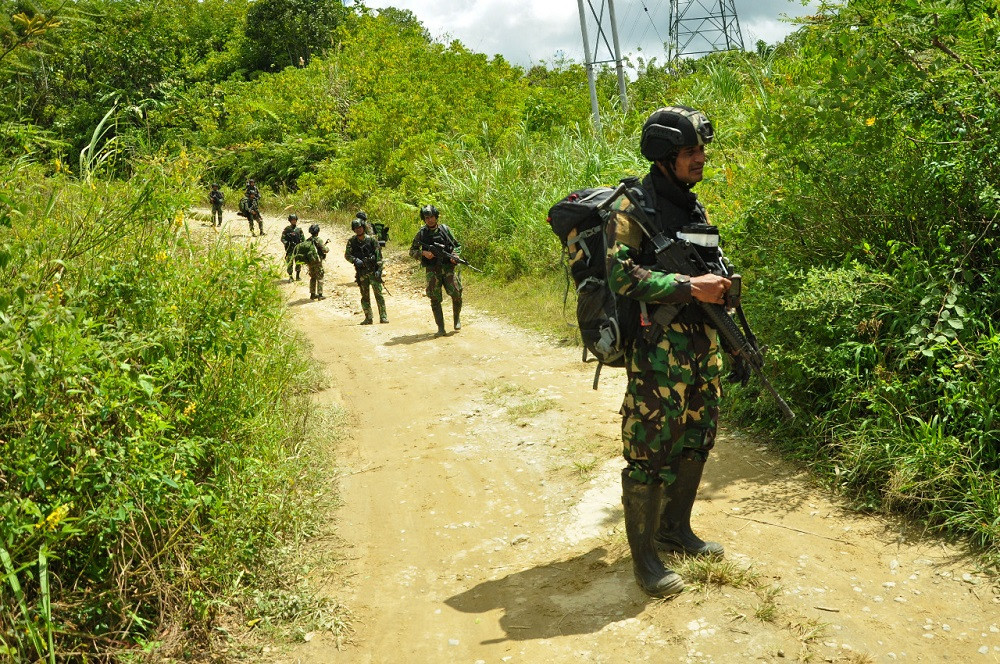Popular Reads
Top Results
Can't find what you're looking for?
View all search resultsPopular Reads
Top Results
Can't find what you're looking for?
View all search resultsWhy Sigi attack won’t reignite sectarian conflict
In establishing peaceful narratives as a response to the Sigi attack, we should not confuse the killings with religious and ethnic concerns.
Change text size
Gift Premium Articles
to Anyone
A
tragic attack allegedly perpetrated by the East Indonesia Mujahidin (MIT) terrorist group killed four people in Lembantongoa village in the Central Sulawesi regency of Sigi last week. The act of terror has further raised security concerns in the region.
In the context of the terrorist attack, it is very difficult to uphold a perspective of peace in search of a comprehensive solution. In his book The Glorious Art of Peace, John Gittings (2012) says history is generally studied and written from the perspective of war, and may look very different from the perspective of peace.
Based on a study by PartnersGlobal and the Peacebuilding Alliance (2015) entitled “Engaging Narratives for Peace”, the main themes defined in a number of different peace-building campaigns are love and togetherness, diversity and inclusion, resolving difference, creating change, fighting injustice, global responsibility, personal responsibility and economic efficiency. These campaigns can be found in civil society organizations (CSOs), especially in places that have experienced collective violence.
The Women Care Movement (GPP) in Maluku, Muhammadiyah women’s wing Aisyiyah and its Nahdlatul Ulama (NU) counterpart Fatayat are just a few examples. In the social media sphere, Twitter account @NUgarislucu is an excellent demonstration of peaceful narratives by promoting pluralism and inclusiveness with witty tones and sermons (see Hidayatullah, 2019).
Following the account’s fruitful public engagement, people of other religions created their own “humorous” accounts, e.g. @GlHindu @HKBP_GL @BuddhisGL @KatolikG @KonghucuGL. These amusing Twitter accounts also connect with each other on a variety of issues or events. Due to humorous delivery, netizens are attracted and more engaged to the issues or events.
Unity in diversity and inclusiveness are what they have in common. This is such an important message amid the turbulence of social media.
In establishing peaceful narratives as a response to the Sigi attack, we should not confuse the killings with religious and ethnic concerns based on three arguments. First, MIT perpetrated attacks randomly. Based on the findings of the Mosintuwu Institute, a grassroots peace movement in Poso, Central Sulawesi, the MIT’s victims came from various faiths.
The group has committed at least four attacks in 2020 with casualties being local farmers. Before the Sigi killings, the group perpetrated three attacks in the neighboring regency of Poso on April 8, April 19 and Aug. 8, killing Daeng Tapo, Ambo Ajeng and Agus Balumba respectively. The first two were Muslim villagers and the latter was a Christian. In September last year, the MIT murdered Wayan Astika, a Hindu resident.
We infer from these attacks that there is no pattern in terms of religion and ethnicity. They killed randomly, which makes them so barbaric.
Second, the MIT is solely committed to criminal offense. After declaring their allegiance to the Islamic State (IS) group in 2014, the group planned to establish an Islamic caliphate in Indonesia with its base in Poso. Since then, the group performed guerrilla tactics in the mountains of Poso. Their survival ability and the rough terrain pose tough challenges on the police who lack aptitude in jungle warfare (Haripin, Anindya and Priamarizki, 2020).
Over the past decade, the MIT has been held responsible for at least 30 attacks, which included targeted shootings, bombings, beheadings and abductions. As a country that is committed to the rule of law, the criminal offenses must be thoroughly investigated in accordance with the law.
Third, the grassroots society in Poso has proven their resilience and resist acts of violence. A recent study by Diprose and Azca (2019) and Kristimanta (2021) found there is a little chance for the large-scale inter-religious group conflict in 1999-2000 to return to Poso.
Diprose and Azca identified four reasons for this argument: there is “conflict fatigue” among society with the strong living memory of the past violence, society is aware of political manipulation and benefits from security and order in the region, the MIT has limited resources, networks and members— their allegiance to IS is not popular among the majority of Muslims, and the shifting of population distribution in Poso as a result of decentralization, with Christians accounting for two-thirds of the population.
Kristimanta added that local wisdom called sintuwu maroso was another element that had contributed to social resilience after the conflict about 20 years ago. Sintuwu maroso (strong when united) is the manifestation of the Poso plural community, which has been living side by side in joy and sorrow.
The Sigi attack was a horrific act but rather than associating it with sectarian issues, our energy should instead focus on law enforcement and assistance to the traumatized locals.
***
The writer is a researcher at The Research Center for Politics, Indonesian Institute of Sciences (LIPI), with research focusing on peace, conflict and security.










